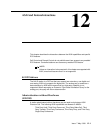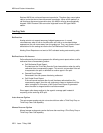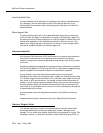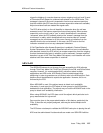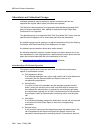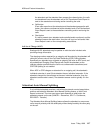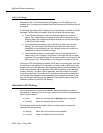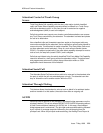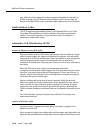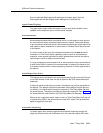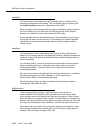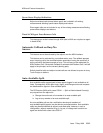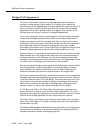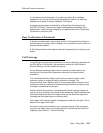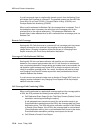
ASAI and Feature Interactions
Issue 7 May 1998
12-9
Attendant Control of Trunk Group
Access
Third Party Make Call capability with the alert_order option (switch-classified
calls) and Route Select capability requests cannot be offered to a Trunk Group
with active attendant control. In this case, the call is ended and a negative
acknowledgement (NAK) is sent to the adjunct.
Calls that provide event reports over domain-controlled associations can access
any Trunk Group controlled by the attendant. The attendant is alerted and places
the call to its destination.
User-classified calls and forwarded supervisor-assist or direct-agent calls may
use trunks controlled by the attendant. Active-notification calls are also allowed to
use such trunks. Trunks seized for switch-classified Third Party Make Calls must
not have attendant control activated. If they do, such calls are denied (cause
CS0/21). For adjunct-routed calls, if the route select capability attempts to route to
such a trunk, the step fails (cause CS0/21) and is skipped.
Calls that are initiated using the switch-classified Third Party Make Call Capability
cannot be offered to a trunk group with active attendant control. Therefore users
and programmers who want to collect charge information within an OCM
application should be aware of this limitation.
Attendant Serial Call
The Attendant Serial Call feature allows calls to be returned to the attendant after
the party to which the call was extended goes on-hook. The attendant can then
drop or extend the call to another station within the ECS.
Attendant Through Dialing
This feature allows the attendant to seize a trunk on behalf of a restricted station
and then transfer it to that station; the station then dials an outgoing call.
AUDIX
Calls that cover to AUDIX do not maintain a simulated bridge appearance on the
principal’s station. [This is true unless DEFINITY ECS AUDIX is operating without
a Data Communications Interface Unit (DCIU) link. In this case, the simulated
bridge appearance is maintained.] The principal receives audible alerting followed
by an interval of coverage response followed by the call dropping from the
principal’s set. When the principal receives alerting, the Alerting Event Report is



